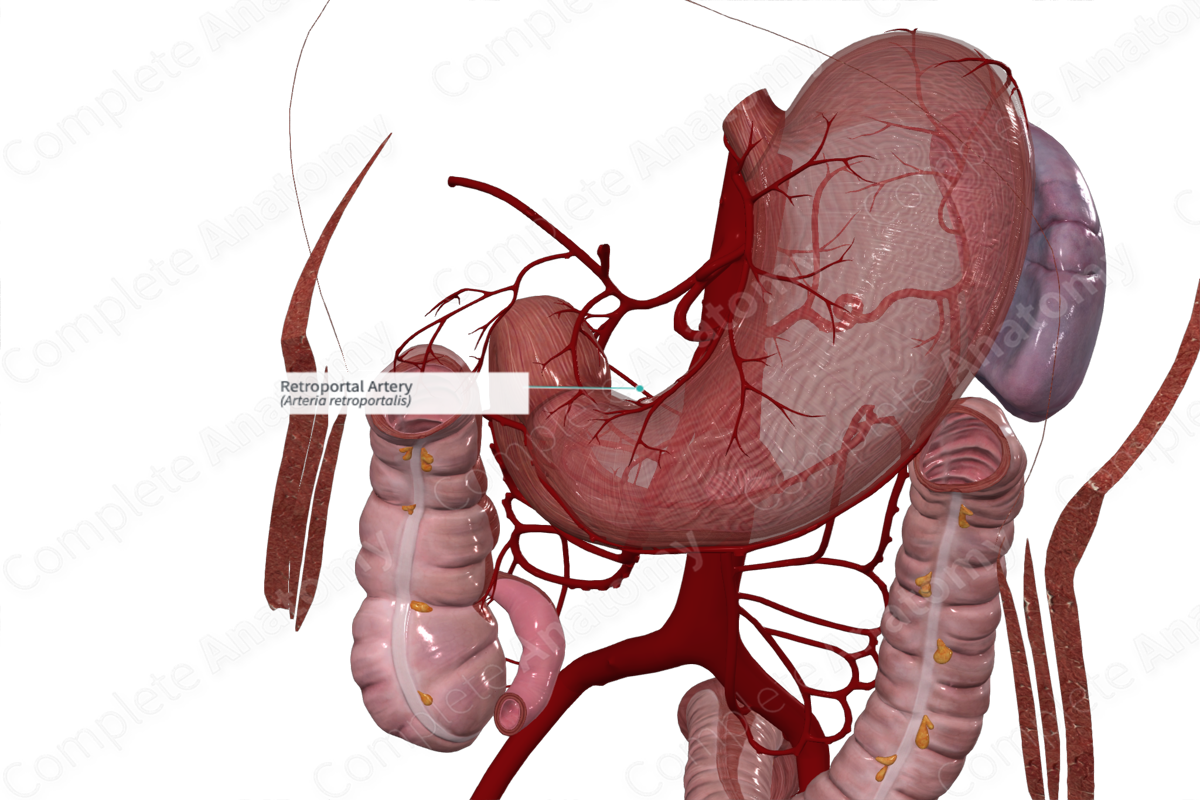
Quick Facts
Origin: Superior mesenteric artery.
Course: Passes to the right on the posterior surface of the portal vein.
Branches: Terminates as part of a network of anastomotic branches around the distal end of the common bile duct.
Supplied Structures: The portion of the common bile duct posterior to the duodenum and within the parenchyma of the pancreas.
Related parts of the anatomy
Origin
The retroportal artery arises from the superior mesenteric artery, or, potentially, from the celiac trunk (Northover and Terblanche, 1979).
Course
Regardless of origin, the retroportal artery passes to the right on the posterior surface of the portal vein.
Branches
The retroportal artery terminates as part of a network of anastomotic branches around the distal end of the common bile duct.
Supplied Structures
The retroportal artery supplies the distal portion of the common bile duct that includes the segment posterior to first part of the duodenum. It then passes into the parenchyma of the pancreas.
References
Northover, J. M. and Terblanche, J. (1979) 'A new look at the arterial supply of the bile duct in man and its surgical implications', Br J Surg, 66(6), pp. 379-84.
Learn more about this topic from other Elsevier products
Artery

Arteries are vessels transporting blood between heart, tissues, and other organs in order to supply them with nutrition and oxygen.



